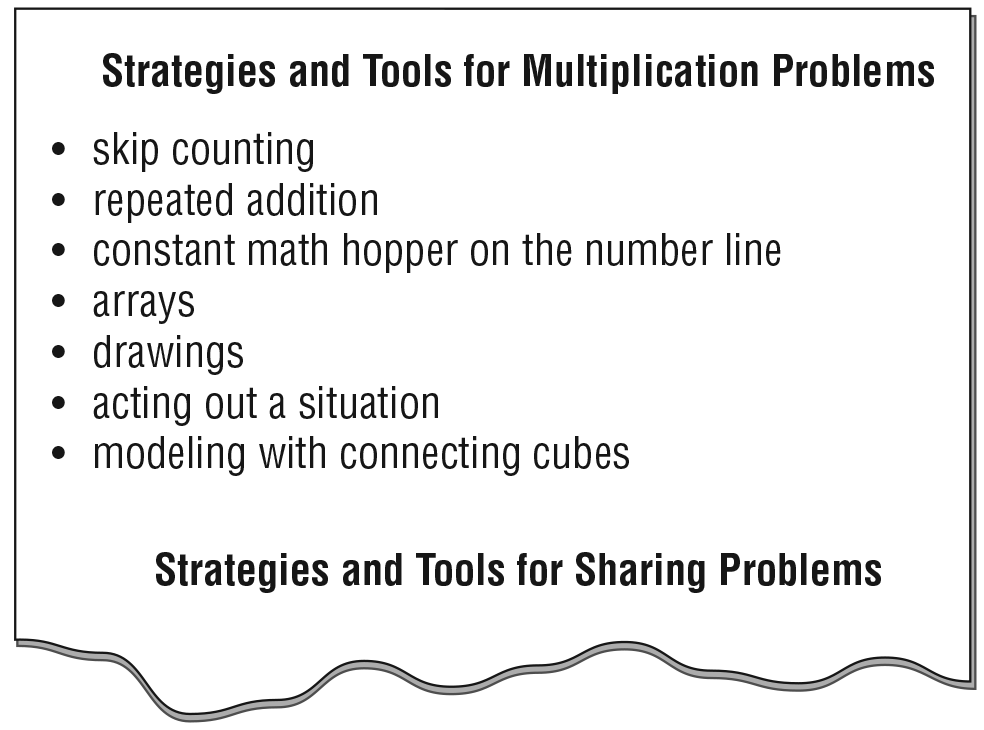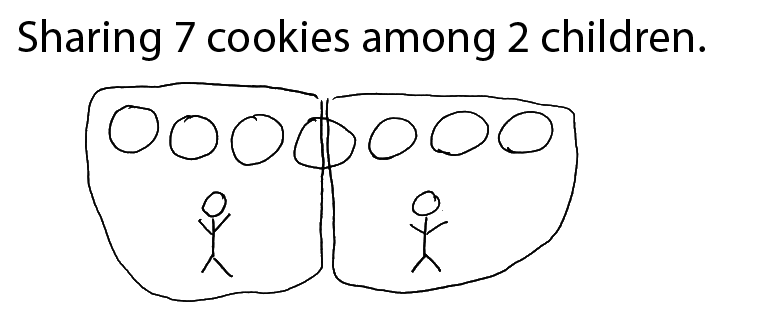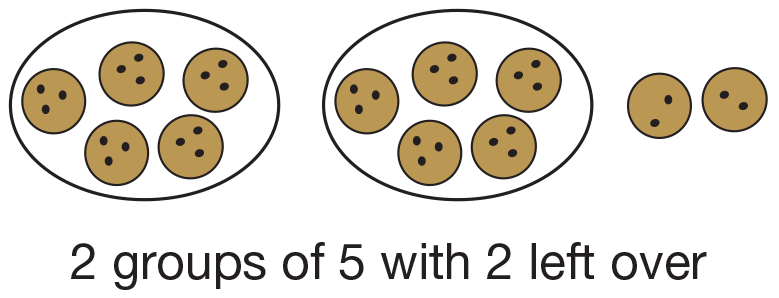This lesson focuses on fair share or division situations. Students use a variety of tools and strategies to solve partitive and measurement division problems. They are introduced to the division number sentence and to the division sign (÷).
Content in this Lesson
- Representing multiplication and division problems using tiles, drawings, number lines, rectangular arrays, and number sentences [E2].
- Solving multiplication and division problems using strategies (e.g., skip counting, repeated addition) with tiles, drawings, number lines, rectangular arrays, and number sentences [E7].
- Dividing a set of objects into equal-size groups [E8].
- Knowing what is important to solve a problem [MPE1].
- Finding an efficient strategy for solving a problem [MPE2].
- Showing or telling how to solve a problem [MPE5].
- Using labels to show what numbers mean [MPE6].
Daily Practice and Problems O–R
O. Subtraction Facts Quiz: Group D
Assessment in this Lesson
| ASSESSMENT | EXPECTATION ASSESSED | MATH PRACTICES EXPECTATION ASSESSED |
|---|---|---|
|
Zoo Kitchen Problems with Feedback Box Student Activity Book Pages 627–629 |
|
|
|
DPP Item O Subtraction Facts Quiz 1: Group D Teacher Guide - digital |
|
|
|
DPP Item Q Subtraction Facts Quiz 2: Group D Teacher Guide - digital |
|

















